Roanoke Island Festival Park
Roanoke Island Festival Park is a 25 acre public event center, interactive historic site, museum, and more – all set in a gorgeous backdrop just across a small bridge from quaint Downtown Manteo (about a 20 minute drive from Nags Head).
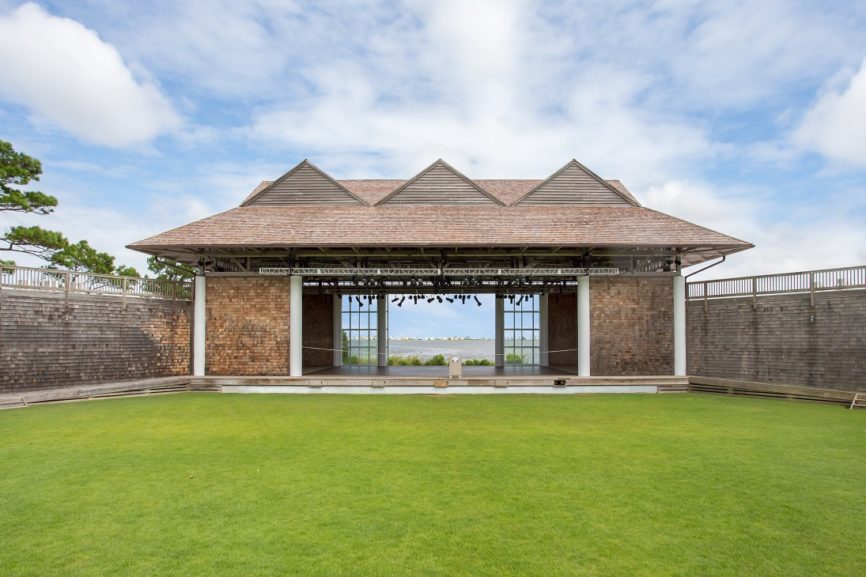
The site includes the Pavilion, an amazing outdoor stage with the Roanoke Sound as a backdrop. As outdoor venues go, it doesn’t get much better than this. There is a large grassy field that can handle up to 3000 festival goers. The setting is beautiful, and with the grounds slanting down to the stage, sound quality is good.
The big annual festival is the Outer Banks Bluegrass Festival, which occurs over Columbus Day weekend 2017. This event is just one of a number of shows that take place under the sun or stars.
The Pavilion, though, is just one of the attractions at Festival Park. Families especially may want to take some time to check out what the park has to offer.
Elizabeth II
A replica of the merchant vessels that brought the colonists to Roanoke Island in 1585, the Elizabeth II is a fully functioning ship. In fact, it is taken for a cruise every year.
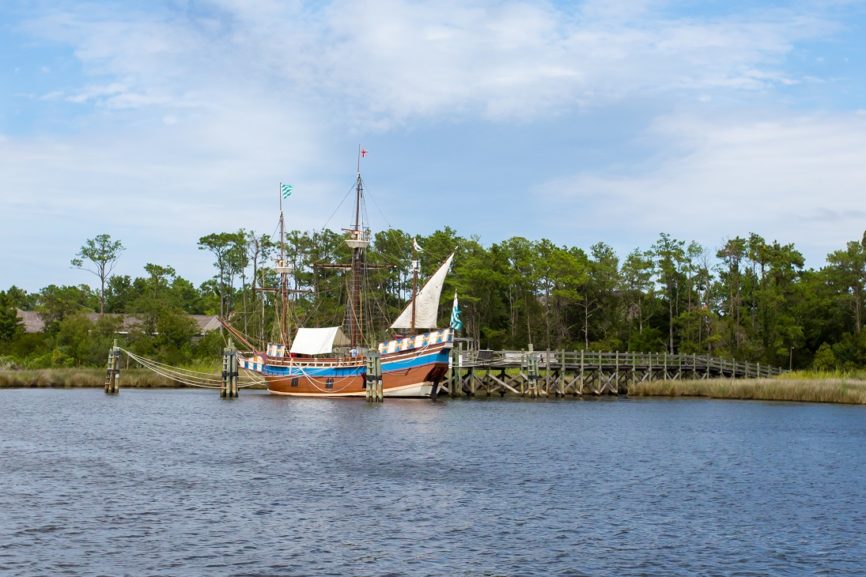
The ship was built to commemorate the 400th anniversary of the founding of the Lost Colony by the Friends of Elizabeth II foundation in 1985. The idea was to dock a replica of the original ship in Downtown Manteo.
The ship is still managed by the Friends of Elizabeth II, although it is considered part of Roanoke Island Festival Park, which is a state facility.
Going on board is a real treat for kids and adults alike. The crew is dressed in period clothing and they speak with appropriate accents. They are knowledgable about the ship’s history and helpful in answering questions.
American Indian Town
The Native Americans the English encountered when they established what became the Lost Colony were members of the Coastal Algonquian tribes.
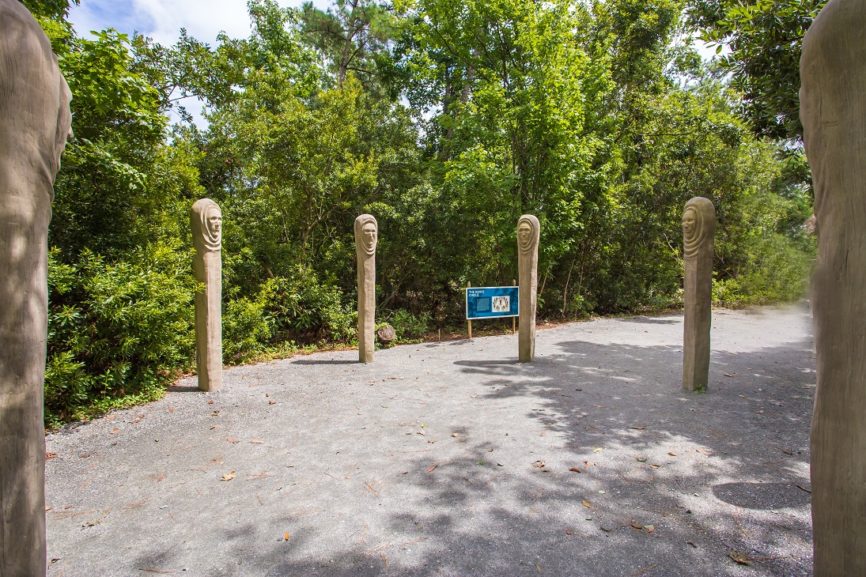
Because of the records and artwork that John White (the 1585 Roanoke Island expedition leader) kept, we have a rough sketch of what life was like for the Native American tribes living around the Outer Banks.
The American Indian Town is an interactive display that recreates a typical settlement, including the longhouses that were at the center of village life, as well as the agricultural practices of the Coastal Algonquians.
Roanoke Adventure Museum
The Adventure Museum is the heart of what makes the Festival park exhibits so compelling.
In a compact but well-laid out museum, the history of the Outer Banks is traced from the Lost Colony to the 20th Century, and includes the beginnings of our modern tourism industry.
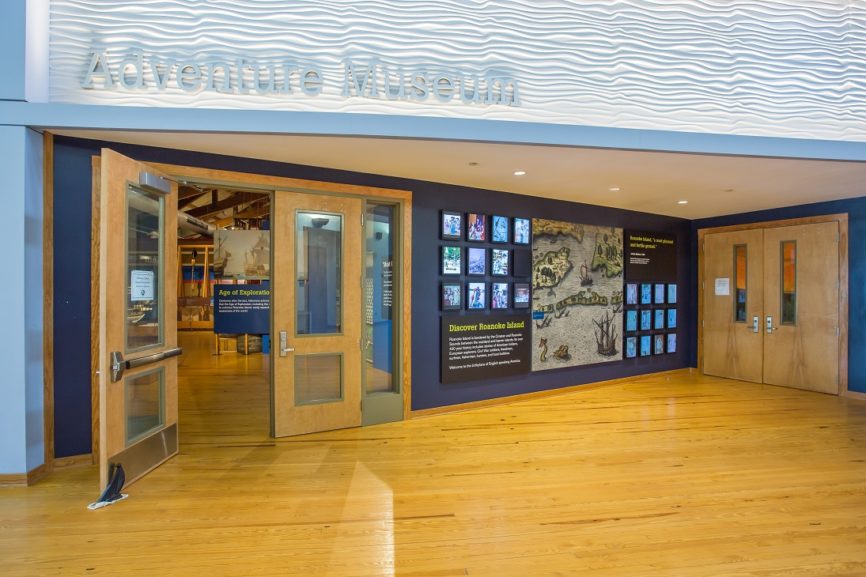
This is a self-guided tour, but along the way there is plenty to do. There is a dress-up area for kids and a demonstration area that describes 16th century navigation.
For adults, there are informative displays that explain each exhibit, including a particularly interesting one about the Lost Colony. Excerpts from the Lost Colony journal from Thomas Hariot are included, as well as the names of all of the colonists.
There is also an exhibit about the Freedmen’s Colony, a Civil War community of about 3000 ex slaves who were housed on the north end of Roanoke Island preceding emancipation, after the island was captured by Union forces. There is no trace of the colony now, but it’s existence is an important part of local history.
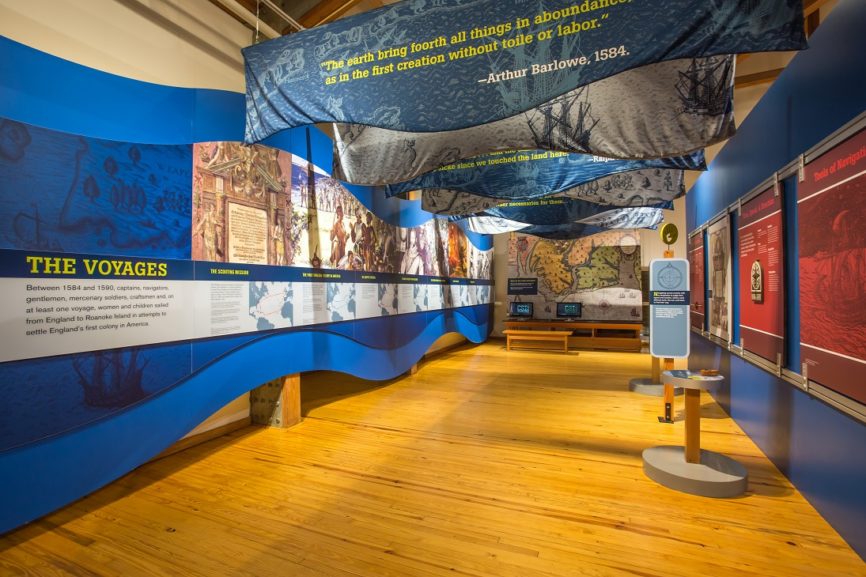
The boating heritage of the Outer Banks is also on display with a shad boat—a design that originated on the Outer Banks and marked local boatbuilders as skilled craftsmen.
In addition to the exhibits and museums at the park, there is a wonderful boardwalk that takes visitors around the perimeter of the 10 acre site. Take a camera and stretch your legs…it’s worth it.
